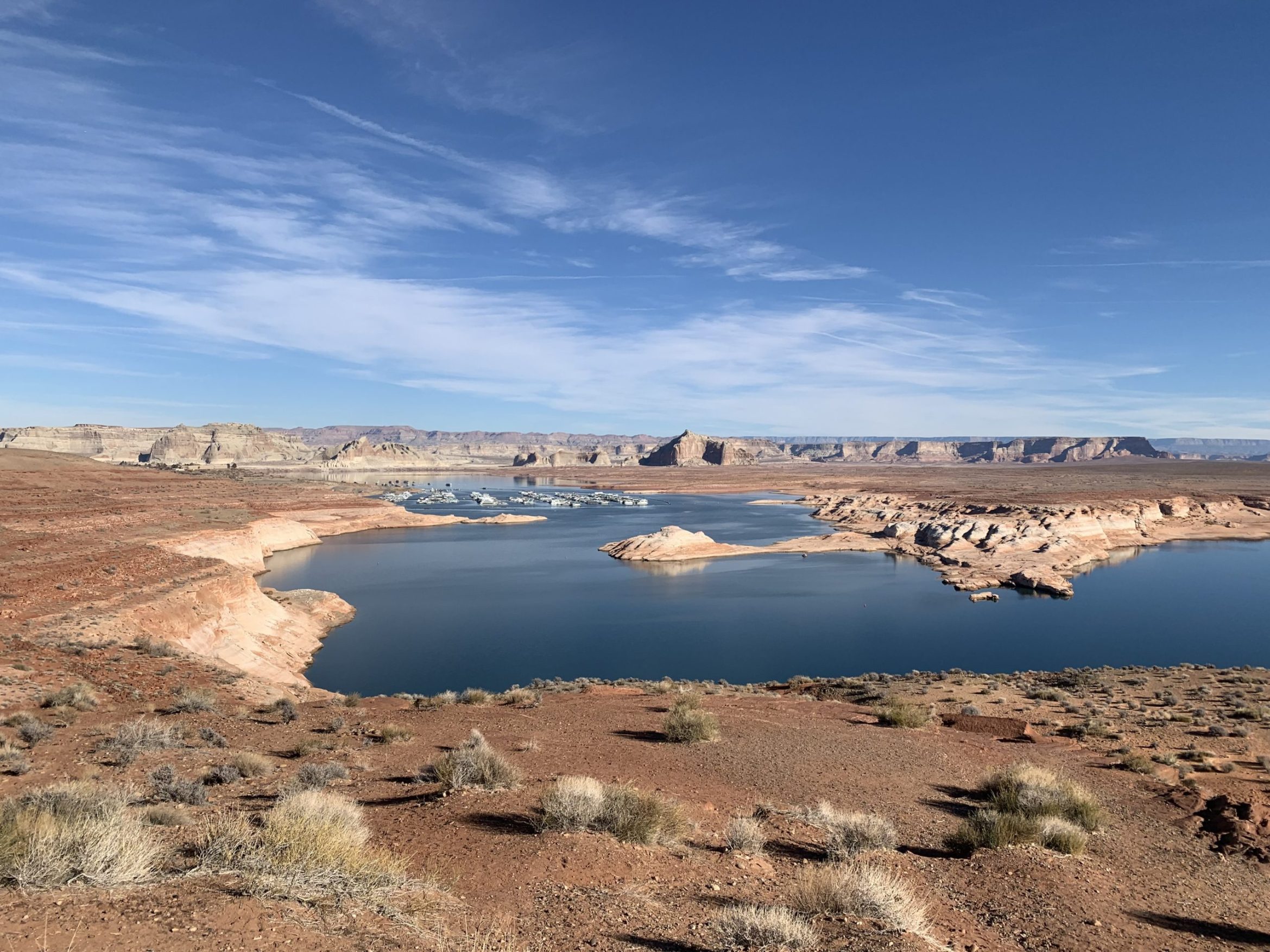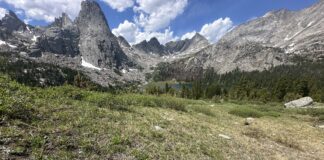
LAS VEGAS — Sobering. Troubling. The new abnormal. Crazy bad. These were the words used to describe conditions on the Colorado River at the largest annual gathering of water managers and experts in Las Vegas this week.
“I just want to manage everyone’s expectations,” said Chuck Cullom, executive director of the Upper Colorado River Commission and former Colorado River Programs Manager for the Central Arizona Project. “It is super grim.”
Water scarcity — and a sense of urgency to address it — has underscored this year’s Colorado River Water Users Association conference. In 2000, the storage system was nearly full, but over the past two decades, the river’s two largest buckets, Lake Powell and Lake Mead, have fallen to just one-third of their capacity. In July, the Bureau of Reclamation began releases from three upper-basin reservoirs, including Blue Mesa in Gunnison County, to prop up levels at Lake Powell and preserve the ability to generate hydropower. In August, the federal government declared the first-ever tier-one shortage in the lower basin, which triggered mandatory cuts for Arizona farmers.
But scarcity, Cullom said, also drives innovation and collaboration. On Wednesday, lower-basin water managers signed a memorandum of understanding, or MOU, to spend up to $200 million to keep levels in Lake Mead from dropping to dangerously low levels. The agreement, known as the 500+ Plan, aims to add 500,000 acre-feet of water to the reservoir in both 2022 and 2023, which would raise the reservoir by about 16 feet.
The program will be funded by $40 million from the Arizona Department of Water Resources; $20 million each from the Central Arizona Project, Metropolitan Water District of Southern California and Southern Nevada Water Authority; and $100 million in matching funds from the federal government.
The lower basin is taking action as a requirement of the 2019 Drought Contingency Plan, which set a threshold of 1,030-feet elevation in Lake Mead. It’s currently at 1,065 feet.
“We have all seen just how quickly the conditions have continued to deteriorate,” said Adel Hagekhalil, general manager of Metropolitan. “The lower-basin water users have recognized we don’t have a lot of time to wait. This unites Arizona, Nevada and California.”
The signing of the MOU came on the same day that the Bureau of Reclamation released its December 24-month study report, which predicts how much water will flow into Lake Powell, a critical data point for water planners. Last month, the bureau predicted the spring runoff would be about 82% of normal. But after a dry November in the upper basin, on Wednesday, the updated monthly estimate had fallen to just 64% of average. Water from Lake Powell feeds Lake Mead downstream. Modeling suggests Lake Powell could fall to below the minimum level needed to generate power by next fall.
Conditions are setting up to mirror a historically bad 2021, when a near-normal snowpack translated to only 31% of normal runoff. It was the second-worst inflow to Lake Powell ever. One of the culprits was a hot, dry previous summer and fall, underscoring the outsized impacts that continuing drought and rising temperatures from climate change are having on the flows of the Colorado River.
“The last 22 years has no 20th-century analogue,” said Brad Udall, senior water and climate research scientist at Colorado State University. “If you call it anything, call it the new abnormal.”
Upper Basin Colorado River Commissioner Pat Tyrrell, who represents Wyoming, said the 500+ Plan was a quick action to respond to the quickly deteriorating conditions.
“It is not painless, that part is self-evident,” he said. “There is no effective approach to the imbalance that doesn’t impact some water user somewhere.”
It’s still unclear where exactly the 500,000 acre-feet of water would come from. One possibility is paying irrigators to voluntarily leave water in the river.
The director of the Colorado Water Conservation Board, Rebecca Mitchell, who also serves as Colorado River commissioner for the state, told state water managers at a breakfast Wednesday that she had not yet seen the details of the water-savings plan from the lower basin.
“We have not seen anything in writing,” she said. “But anything to address and protect the reservoirs I’m obviously going to support.”
Aspen Journalism covers water and rivers in collaboration with The Aspen Times.
The Water Desk’s mission is to increase the volume, depth and power of journalism connected to Western water issues. We’re an initiative of the Center for Environmental Journalism at the University of Colorado Boulder. The Water Desk launched in April 2019 with support from the Walton Family Foundation. We maintain a strict editorial firewall between our funders and our journalism.





